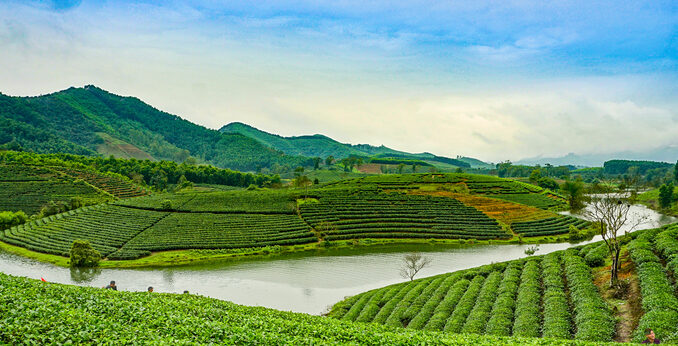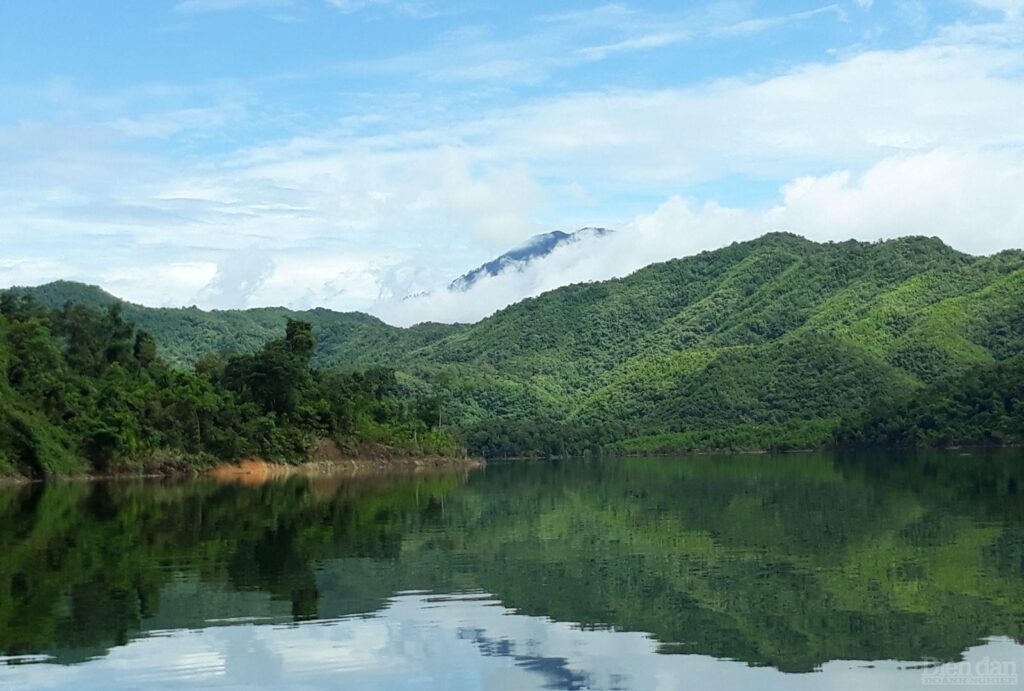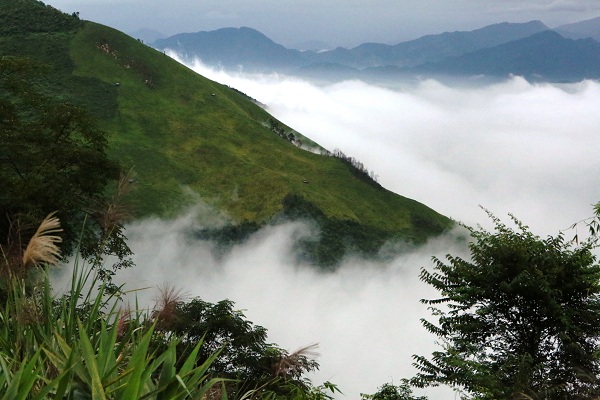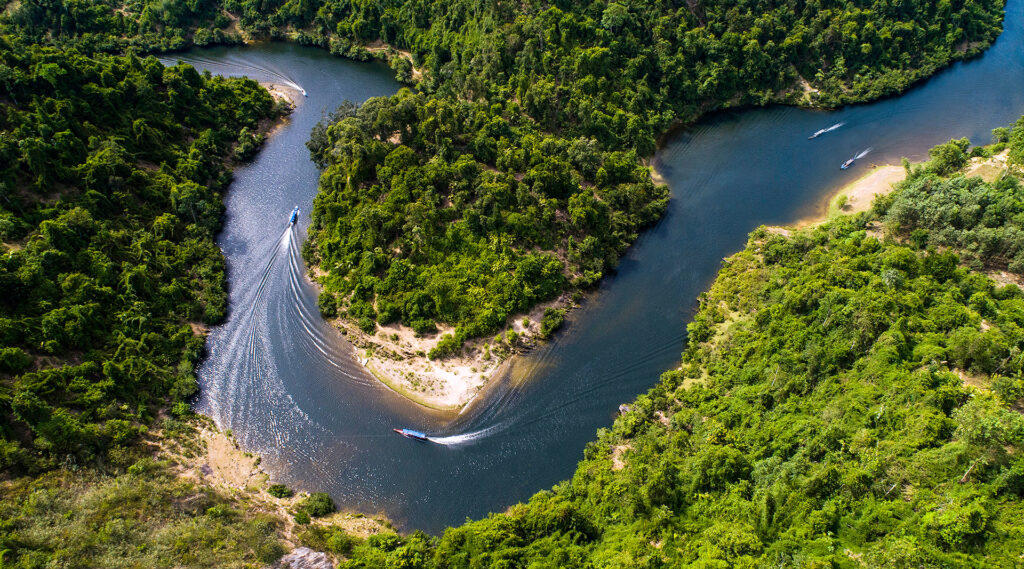
Nestled in the heart of Vietnam’s Annamite Mountains, West Nghe An Biosphere Reserve is a UNESCO World Heritage Site and a Ramsar Wetland of International Importance. Established in 2004, the reserve encompasses over 1.3 million hectares of pristine natural landscapes, making it one of the largest biosphere reserves in Southeast Asia. This vast expanse of land is home to an impressive array of flora and fauna, many of which are rare and endangered.
The reserve includes three core zones, namely Pu Mat National Park – a storehouse of fauna and flora species, Pu Huong and Pu Hoat Nature Reserves, and the entire watershed of Ca River.
Biodiversity
Western Nghe An Biosphere Reserve has a high biodiversity, representing most types of tropical rainforests with a rich array of habitats such as mountains, wetlands, and streams. This is the only area in the north that has a large area of primitive forest that is well protected. It lies along the border between Vietnam and Laos. There are many rare species in the reserve.
It is home to over 3,960 species, of which 3,019 are vascular plants and 942 are large and small vertebrates. Many of these animals and plants are rare or endangered, as noted by international sources and the Red Book of Vietnam.
In particular, Western Nghe An Biosphere Reserve is identified as one of the three areas in the country where the Asian elephant population exists in significant numbers according to herd size.
Outstanding cultural value

Western Nghe An Biosphere Reserve has the largest ethnic and cultural diversity among biosphere reserves in Vietnam. In particular, it is populated by two ethnic groups that are unique to Nghe An and are on the verge of losing their cultural identity. They are the Dan Lai ethnic group, with 3,000 people living in Con Cuong district, and the O Du group, with 570 people living in Tuong Duong district.
The diversity and rich cultural identity of ethnic minority groups are the biggest characteristics and sources of pride in the Western region of Nghe An. Many customs, folk songs, dances, traditional crafts, culinary culture, costumes, and stilt-house architecture are imbued with unique indigenous culture.
Traditional Practices and Festivals: The ethnic groups living in the reserve have preserved their traditional practices and festivals over generations. These celebrations reflect their beliefs, values, and connection to the natural world.
Artisan Craftsmanship: The reserve’s inhabitants are skilled artisans, renowned for their exquisite handicrafts. These include intricate embroidery, traditional weaving, and delicate wood carvings, each showcasing the unique artistry of the local communities. These handicrafts provide a source of income and cultural expression for the artisans. Oral Traditions and Folklore: The ethnic groups of the reserve have a rich tradition of oral storytelling, passing down folktales, legends, and historical accounts through generations.

These stories convey their beliefs, values, and connection to the land, providing a window into their cultural identity.
Culinary Traditions: The reserve’s cuisine is a blend of flavors and influences from various ethnic groups. Each community has its culinary specialties, using local ingredients and traditional cooking methods. Visitors can savor the unique flavors of the region through homestays and local markets.
Tourism potential
Western Nghe An Biosphere Reserve, with its breathtaking natural beauty, diverse ecosystems, and rich cultural heritage, holds immense potential for tourism development. The reserve’s unique attractions and untapped potential offer opportunities for various forms of tourism that can benefit both local communities and the environment.
– Ecotourism: The reserve’s pristine natural landscapes, including lush tropical forests, towering karst mountains, and cascading waterfalls, provide an ideal setting for ecotourism activities. Visitors can engage in nature walks, trekking expeditions, and boat tours, immersing themselves in the reserve’s biodiversity and experiencing its natural beauty responsibly.
– Community-based Tourism: Promoting community-based tourism allows visitors to interact directly with local communities, learn about their traditions and lifestyles, and contribute to their economic well-being. Homestays, cultural performances, and traditional handicraft workshops provide opportunities for meaningful cultural exchange and support local livelihoods.

– Adventure Tourism: The reserve’s rugged terrain and diverse ecosystems offer opportunities for adventure tourism activities such as rock climbing, spelunking, and whitewater rafting. These activities can attract thrill-seekers and outdoor enthusiasts while ensuring minimal impact on the environment through responsible practices.
– Cultural Tourism: The reserve’s rich ethnic diversity and traditional practices provide a fascinating backdrop for cultural tourism. Visitors can explore the villages of different ethnic groups, participate in local festivals, and learn about their unique customs, arts, and crafts. This fosters cultural appreciation and promotes cross-cultural understanding.
– Scientific Tourism: The reserve’s exceptional biodiversity and diverse habitats make it an ideal destination for scientific tourism. Researchers can conduct studies on various aspects of the ecosystem, including flora and fauna, conservation efforts, and sustainable development practices. This contributes to scientific knowledge and informs conservation strategies.
Conclusion
Western Nghe An Biosphere Reserve was recognized by UNESCO on September 18, 2007. This is the biosphere reserve with the largest area in Southeast Asia. Western Nghe An Biosphere Reserve stands as a testament to Vietnam’s commitment to preserving its natural heritage and promoting sustainable development. Its exceptional biodiversity, diverse habitats, and ecological significance make it an invaluable resource for both conservation and ecotourism. The reserve’s cultural heritage, with its rich tapestry of ethnic traditions and practices, further enriches its value as a cultural treasure trove.
By continuing to protect and manage this unique ecosystem, fostering sustainable tourism practices, and engaging local communities in conservation and development efforts, Western Nghe An Biosphere Reserve can continue to thrive as a model for harmonious coexistence between nature and human endeavors. It remains a beacon of hope for preserving our planet’s natural beauty and cultural diversity for future generations.
Get an opportunity to visit the Global Biosphere Reserve in Vietnam through Vietnam E-Visa!